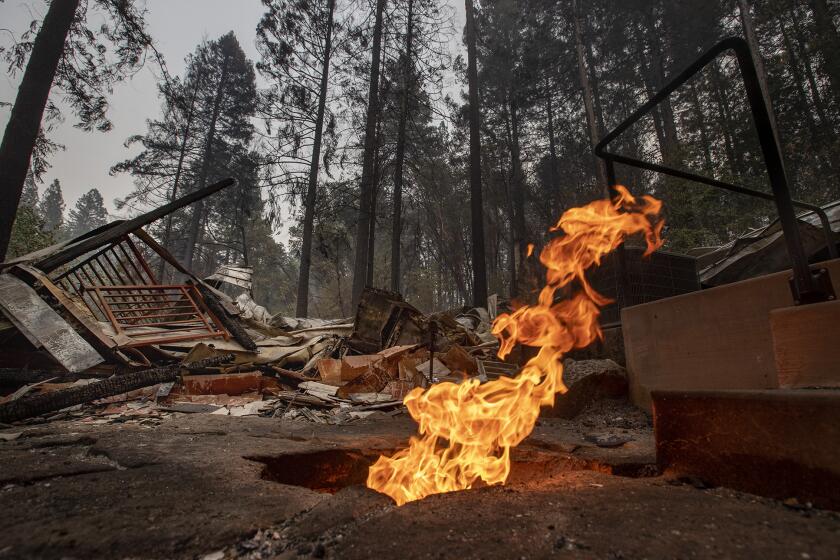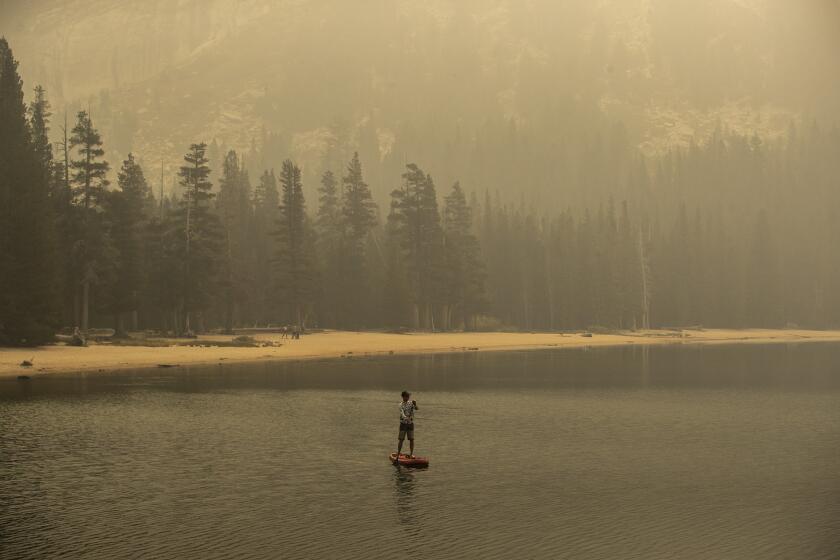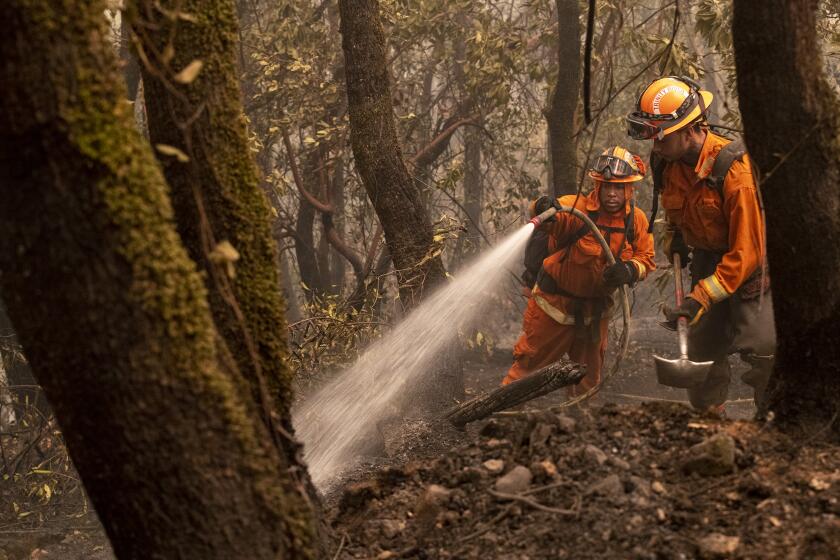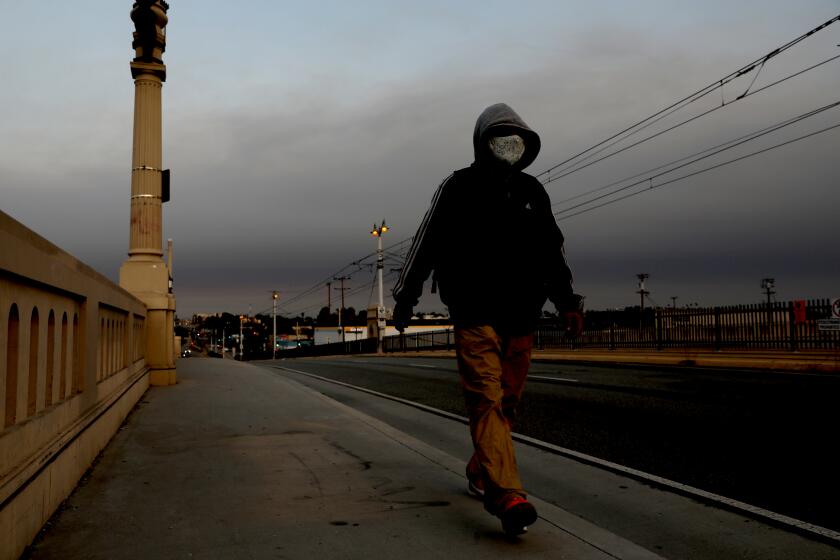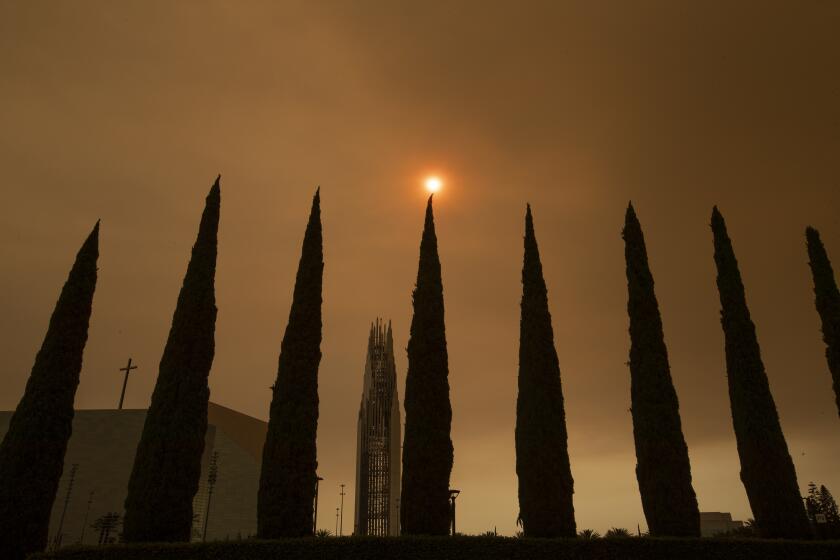‘Sad, tragic loss for all Californians’: Death toll in state fires at 19
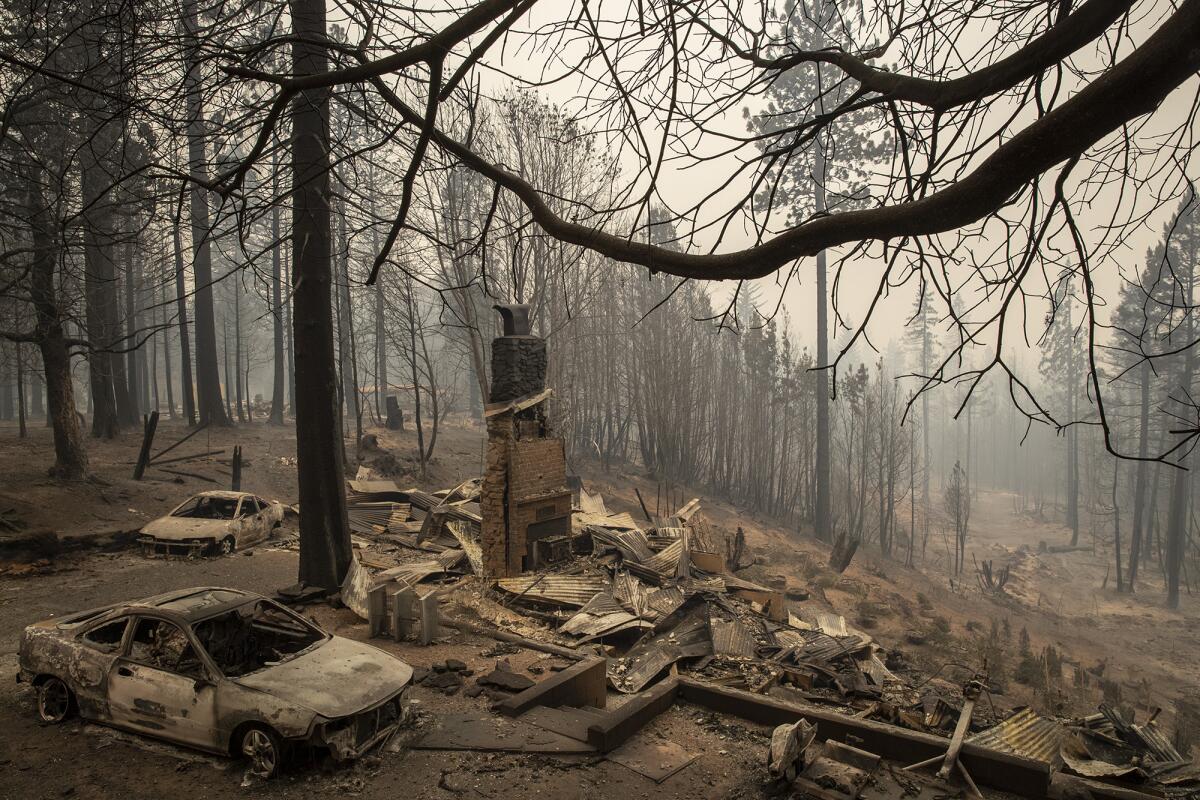
- Share via
A record-shattering rash of wildfires is continuing to take a devastating and deadly toll on California, even as crews report some progress in their battle against the largest firestorm in modern state history.
The collective scale of the infernos that have scarred the state over the last month is staggering: at least 19 fatalities, tens of thousands of structures destroyed and more than 3.1 million acres burned — the most recorded in a single year and all but 500,000 acres since Aug. 16.
The loss has been most profound from the North Complex fire near Oroville in Butte County, which is now blamed for nine deaths, placing it among the deadliest wildfires in state history, according to the California Department of Forestry and Fire Protection.
Among those killed were 16-year-old Josiah Williams and 77-year-old Millicent Catarancuic. Officials said Williams was believed to have been attempting to evacuate in his own vehicle and that Catarancuic had been aware of the fire but chose to stay.
A 16-year-old boy who lived with his father in Berry Creek is among 10 people killed in the blaze, now among the state’s deadliest.
Officials revised the North Complex fire’s death toll Friday night from 10 to nine people. Butte County Sheriff-Coroner Kory Honea said deputies had found what they thought were burned human remains in a storage shed. Anthropologists later determined it was an anatomical model of a skeleton made of resin, and a resident who owned the property confirmed that he had used the model while studying anthropology.
An additional 19 people have been reported missing in the area of the fire, which has burned more than 252,000 acres and was 21% contained as of Friday night.
Steve Kaufmann, a spokesman for the fire’s response team, said Thursday that 2,000 structures have been destroyed or damaged, though that number may increase after crews further assess the area.
A second death was confirmed Thursday near the community of Happy Camp in the burn area of the Slater fire, which has chewed through more than 136,000 acres in Siskiyou and Del Norte counties and across the border into Oregon. That blaze remains 0% contained.
Cal Fire spokesman Daniel Berlant called the overall death toll “a very, very sad and tragic loss for all Californians.”
With months of fire season ahead, blazes across California explode in size, taxing resources. Ten are reported dead in fire sweeping Butte and nearby counties.
Officials also saw further growth in the monstrous August Complex fire, already the largest in state history. That blaze has now scorched more than 491,000 acres in a remote area in and around Tehama County.
Abutting it to the north is the Elkhorn fire, burning in the Mendocino, Shasta-Trinity and Six Rivers national forests. It has charred 255,309 acres.
For a time, online reports had combined the Elkhorn fire statistics with the August Complex fire umbrella — resulting in a mammoth merger listed at more than 746,000 acres.
But Kimberly Kaschalk, a public information officer for the August Complex response, said Friday morning that the combination was more a reflection of the unified command structure set up to manage all the blazes in the area, rather than an indication that the fires had physically combined.
“I’m sure a lot of people are spitting out their coffee this morning when they see that,” she said.
The online August Complex acreage figures were revised downward later in the morning.
The scope of this year’s fire season has been both historic and horrifying. Six of the state’s 20 largest wildfires have started in the last month or so, according to Cal Fire.
Within the last week, front-line firefighters have had to contend with a record-breaking heat wave and howling winds — a noxious combination that fueled explosive fire growth statewide.
Many officials and experts believe such extreme weather conditions are the result of climate change.
“If you do not believe in science, I hope you believe in observed evidence,” Gov. Gavin Newsom said Friday as he surveyed damage in the Oroville area.
“You walk around this community, you walk around this park around Lake Oroville, you see the reality — a reality that has set in in this state in very indelible ways. And that is, we’re in the midst of a climate emergency. We’re in the midst of a climate crisis. We are experiencing weather conditions the likes of which we’ve never experienced in our lifetime. We’re experiencing what so many people predicted decades and decades ago, but all of that, now, is reality.”
The repercussions of that reality, Newsom said, are that “the hots are getting a lot hotter, the dries are getting a lot drier, and the wets are getting a lot wetter.” In California, he added, “we have to own that reality, and we have to own a response to that reality.”
“This is a climate damn emergency,” he said. “This is real, and it’s happening.”
Gov. Gavin Newsom visited an area burned by wildfires in Oroville, Calif., on Friday and called the Trump administration to task for its record on climate change.
Despite the challenges, California fire officials say they have continued to gain ground amid weather conditions that are currently improving.
“The smoke layer covering much [of] Northern California will help maintain cooler temperatures into the weekend, and an onshore [air] flow next week will help increase humidity,” Cal Fire officials wrote in a situation report Friday. “In Southern California, desert regions will remain dry and warm, with the mountains and coastal regions experiencing an onshore flow that is helping with humidity recovery and seasonal temperatures.”
Though the near-term forecast is promising, officials warned that fire season is far from over. Roughly 14,800 firefighters are still battling 28 major wildfires burning statewide, according to Cal Fire.
“Don’t let these cooler temperatures fool you. Do not let your guard down,” Berlant said Friday. “Historically, it is September and October when we experience our largest and our most damaging wildfires.”
The air around Southern California feels like smoke soup because of wildfires. What does that mean for your health and daily routines?
There are signs of progress in some areas.
The El Dorado fire near Yucaipa has burned almost 14,000 acres and was 37% contained as of Friday night. In San Diego County, the Valley fire near the Mexican border remains at 17,665 acres and is 55% contained, according to Cal Fire.
All evacuation orders, evacuation warnings and road closures in the area of the Valley fire were lifted Friday afternoon. For the El Dorado fire, Yucaipa police also lifted the evacuation orders for all areas east of Jefferson Street and south of Carter Street.
Officials are also now reporting 6% containment on the Creek fire, which has burned almost 176,000 acres and destroyed an estimated 369 structures in the Sierra foothills northeast of Fresno.
The Bobcat fire burning in the San Gabriel Mountains above Monrovia is also now 6% contained. It has charred more than 26,000 acres.
The smoke advisory for much of the region is likely to remain in effect through the weekend, the South Coast Air Quality Management District says.
Smoke from that fire again blanketed parts of Los Angeles County on Friday, prompting air quality advisories for much of the region. Areas along the 210 Freeway from Pasadena to Rancho Cucamonga are likely to see the highest levels of particulate matter, according to the South Coast Air Quality Management District.
“Even in areas far from fires or areas not covered by a smoke advisory, if you can smell smoke or see ash from a wildfire, avoid or limit outdoor activities,” the district said.
In the San Francisco Bay Area, which has been socked in with smoke this week, local police departments sent alerts to residents about hazardous air quality.
San Francisco opened relief centers for homeless people Friday and urged everyone else to stay inside with windows and doors shut. Air quality throughout much of the region was at “very unhealthy” levels Friday.
Mary Ellen Carroll, executive director of San Francisco’s Department of Emergency Services, said during an online news conference that older people, those with respiratory illnesses and children were especially at risk.
She urged residents not to use leaf blowers, barbecues or hair spray, to avoid indoor painting and to use exhaust fans while cooking.
“We are asking people to stay indoors with windows and doors closed,” she said.
Times staff writers Hayley Smith, Maura Dolan, Colleen Shalby and Andrea Castillo contributed to this report.
More to Read
Sign up for Essential California
The most important California stories and recommendations in your inbox every morning.
You may occasionally receive promotional content from the Los Angeles Times.
